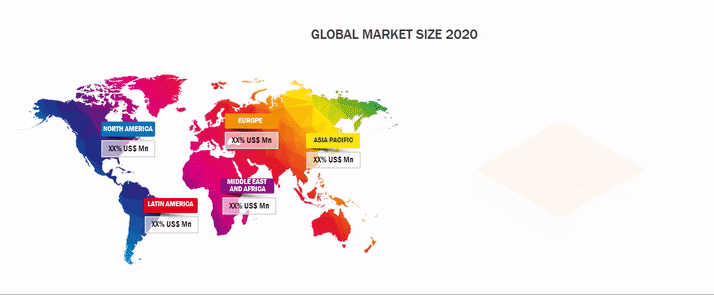A new business intelligence report released by HTF MI with title “Global Big Data Software Market Report 2020” is designed covering micro level of analysis by manufacturers and key business segments. The Global Big Data Software Market survey analysis offers energetic visions to conclude and study market size, market hopes, and competitive surroundings. The research is derived through primary and secondary statistics sources and it comprises both qualitative and quantitative detailing. Some of the key players profiled in the study are FCS Computer Systems, Qlik, IBM, Phocas Software, Cyfe, MongoDB, Altair, Elastic, MicroStrategy, Margasoft, SAP, Artelnics, Informatica, Radius, Teradata, Hitachi Vantara & IQLECT.
What’s keeping FCS Computer Systems, Qlik, IBM, Phocas Software, Cyfe, MongoDB, Altair, Elastic, MicroStrategy, Margasoft, SAP, Artelnics, Informatica, Radius, Teradata, Hitachi Vantara & IQLECT Ahead in the Market? Benchmark yourself with the strategic moves and findings recently released by HTF MI
Get Sample Report + All Related Graphs & Charts @ : https://www.htfmarketreport.com/sample-report/2499987-global-big-data-software-market-6
Market Overview of Global Big Data Software
If you are involved in the Global Big Data Software industry or aim to be, then this study will provide you inclusive point of view. It’s vital you keep your market knowledge up to date segmented by Applications [Small and Medium Enterprises (SMEs), Large Enterprises], Product Types [, On-premises, Cloud-Based] and major players. If you have a different set of players/manufacturers according to geography or needs regional or country segmented reports we can provide customization according to your requirement.
This study mainly helps understand which market segments or Region or Country they should focus in coming years to channelize their efforts and investments to maximize growth and profitability. The report presents the market competitive landscape and a consistent in depth analysis of the major vendor/key players in the market along with impact of economic slowdown.
Furthermore, the years considered for the study are as follows:
Historical year – 2015-2020
Base year – 2020
Forecast period** – 2021 to 2026 [** unless otherwise stated]
**Moreover, it will also include the opportunities available in micro markets for stakeholders to invest, detailed analysis of competitive landscape and product services of key players.
Enquire for customization in Report @: https://www.htfmarketreport.com/enquiry-before-buy/2499987-global-big-data-software-market-6
The titled segments and sub-section of the market are illuminated below:
The Study Explore the Product Types of Big Data Software Market: , On-premises, Cloud-Based
Key Applications/end-users of Global Big Data Software Market: Small and Medium Enterprises (SMEs), Large Enterprises
Top Players in the Market are: FCS Computer Systems, Qlik, IBM, Phocas Software, Cyfe, MongoDB, Altair, Elastic, MicroStrategy, Margasoft, SAP, Artelnics, Informatica, Radius, Teradata, Hitachi Vantara & IQLECT
Region Included are: North America Country (United States, Canada), South America, Asia Country (China, Japan, India, Korea), Europe Country (Germany, UK, France, Italy), Other Country (Middle East, Africa, GCC)
Important Features that are under offering & key highlights of the report:
– Detailed overview of Big Data Software market
– Changing market dynamics of the industry
– In-depth market segmentation by Type, Application etc
– Historical, current and projected market size in terms of volume and value
– Recent industry trends and developments
– Competitive landscape of Big Data Software market
– Strategies of key players and product offerings
– Potential and niche segments/regions exhibiting promising growth
– A neutral perspective towards Big Data Software market performance
– Market players information to sustain and enhance their footprint
Read Detailed Index of full Research Study at @ https://www.htfmarketreport.com/reports/2499987-global-big-data-software-market-6
Major Highlights of TOC:
Chapter One: Global Big Data Software Market Industry Overview
1.1 Big Data Software Industry
1.1.1 Overview
1.1.2 Products of Major Companies
1.2 Big Data Software Market Segment
1.2.1 Industry Chain
1.2.2 Consumer Distribution
1.3 Price & Cost Overview
Chapter Two: Global Big Data Software Market Demand
2.1 Segment Overview
2.1.1 APPLICATION 1
2.1.2 APPLICATION 2
2.1.3 Other
2.2 Global Big Data Software Market Size by Demand
2.3 Global Big Data Software Market Forecast by Demand
Chapter Three: Global Big Data Software Market by Type
3.1 By Type
3.1.1 TYPE 1
3.1.2 TYPE 2
3.2 Big Data Software Market Size by Type
3.3 Big Data Software Market Forecast by Type
Chapter Four: Major Region of Big Data Software Market
4.1 Global Big Data Software Sales
4.2 Global Big Data Software Revenue & market share
Chapter Five: Major Companies List
Chapter Six: Conclusion
Complete Purchase of Latest Version Global Big Data Software Market Study @ https://www.htfmarketreport.com/buy-now?format=1&report=2499987
Key questions answered
• How Global Big Data Software Market Growth & Size is Changing with Years to Come?
• Who are the Leading key players and what are their Key Business plans in the Global Big Data Software market?
• What are the key concerns of the five forces analysis of the Global Big Data Software market?
• What are different prospects and threats faced by the dealers in the Global Big Data Software market?
• What are the strengths and weaknesses of the key vendors?
Thanks for reading this article; you can also get individual chapter wise section or region wise report version like North America, Europe or Asia.
Contact US :
Craig Francis (PR & Marketing Manager)
HTF Market Intelligence Consulting Private Limited
Unit No. 429, Parsonage Road Edison, NJ
New Jersey USA – 08837
Phone: +1 (206) 317 1218
[email protected]
Connect with us at LinkedIn | Facebook | Twitter








